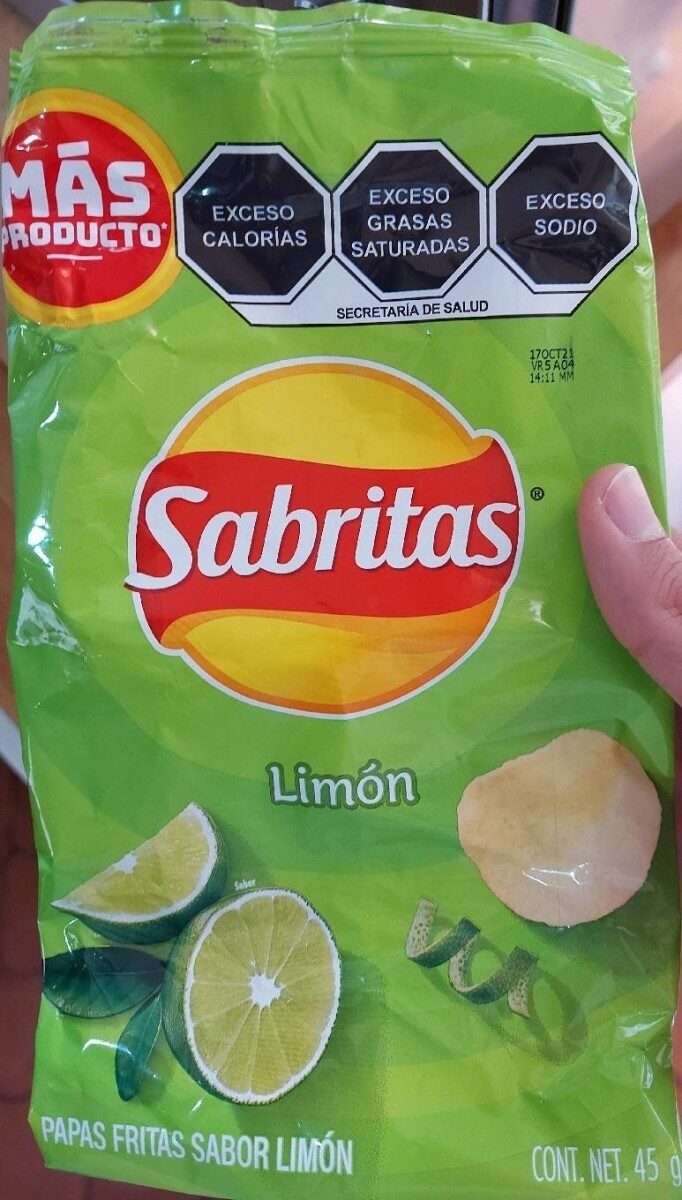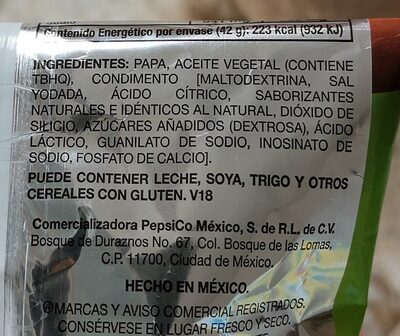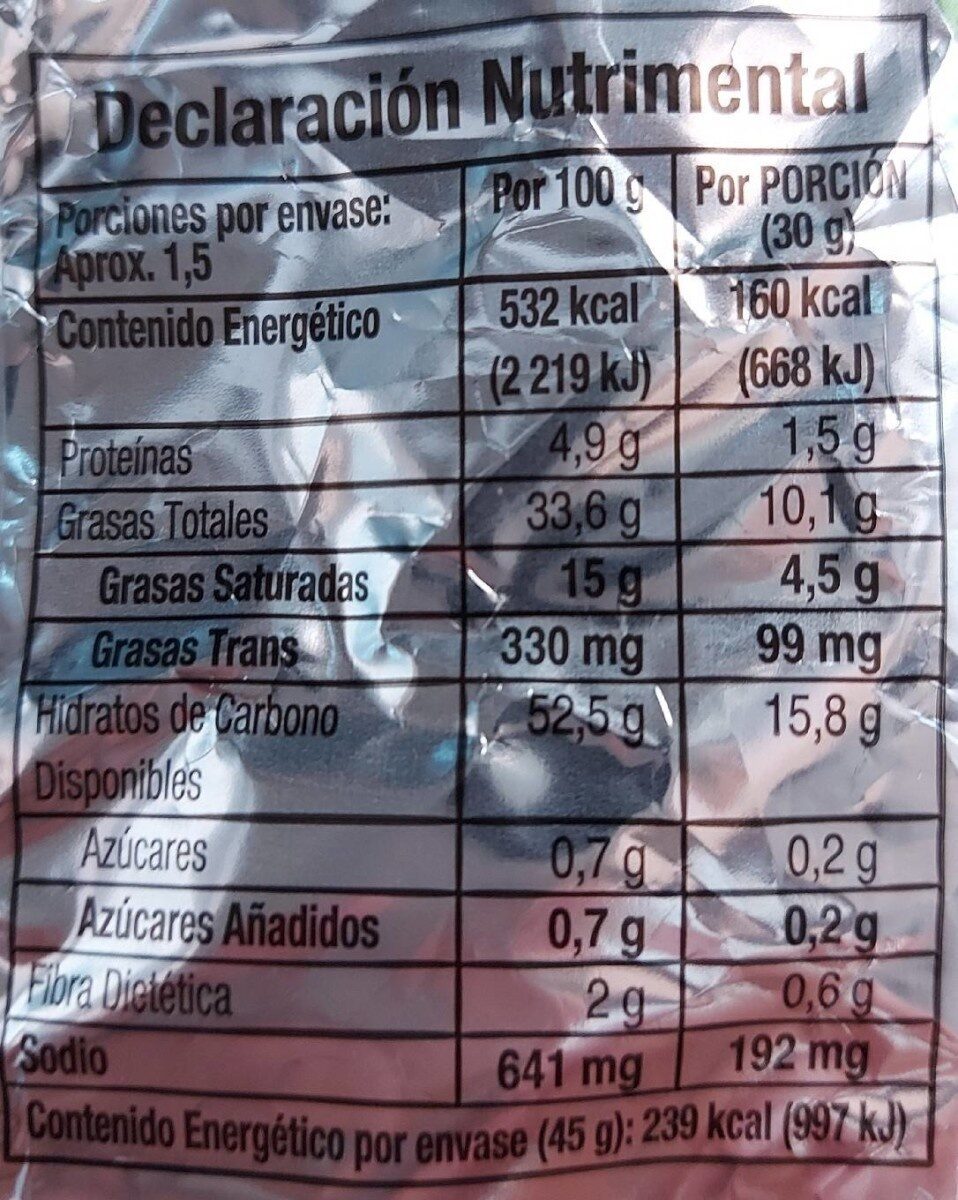Sabritas limón
This product page is not complete. You can help to complete it by editing it and adding more data from the photos we have, or by taking more photos using the app for Android or iPhone/iPad. Thank you!
×
Barra-kodea: 7501011101678 (EAN / EAN-13)
Markak: Sabritas
Kategoriak: en:Snacks, en:Salty snacks, en:Appetizers, en:Chips and fries, en:Crisps, en:Alimentos de origen vegetal, en:Alimentos y bebidas de origen vegetal, en:Aperitivos, en:Botanas, en:Cereales y patatas, en:Chips de patatas fritas, en:Chips fritos, en:Patatas fritas, en:Snacks salados
Etiketak, ziurtagiriak, sariak:
Kosher, Sistema de Etiquetado Frontal de Alimentos y Bebidas, Exceso Calorías
Dendak: Oxxo
Matching with your preferences
Ingurumena
Ontziratzea
Transportation
Report a problem
Datuen iturria
Product added on by openfoodfacts-contributors
Last edit of product page on by 5m4u9.
Produktuaren orria -gatik editatua elcoco, inf, jjmtz, kiliweb, roboto-app, thaialagata, vegan-app-chakib, yuka.sY2b0xO6T85zoF3NwEKvlhNaTPXMn27dNDnUo0LU4MuNB7XIQ-FN04GiKag, yuka.sY2b0xO6T85zoF3NwEKvlnVtDtPjhy7WCEPigkaJnYvQJKLxTMBo26vwGqs.











